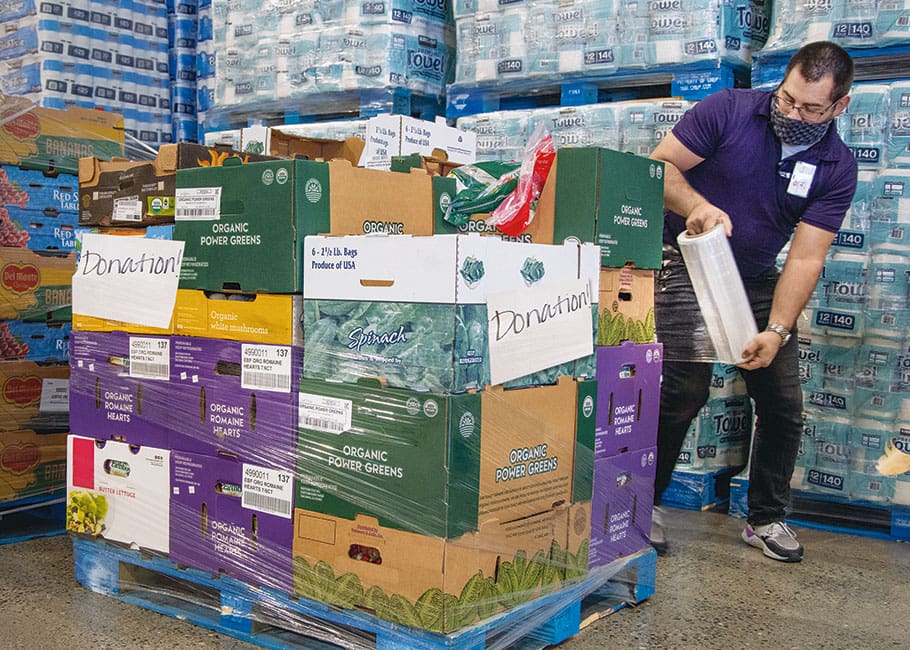
Costco produce supervisor Alex Rohrer prepares a pallet for donation.
© MIKE SIEGEL
Do not discard
From peaches that are slightly bruised to school supplies returned by members, Costco takes steps to keep perfectly usable products out of local landfills. Through partnerships with local organizations, these goods end up in communities in need where they’re put to good use.
Throughout a busy day at the Costco warehouse in Burnaby, British Columbia, produce manager Kyle Benn and his team are restocking the large selection of fruit and produce in the warehouse’s fresh foods area. As they do, they’re closely examining all the foods. The target: any item that doesn’t quite meet Costco’s standards, yet is still perfectly good. In a box of peaches, Benn spots some slightly bruised fruit and pulls the box.
But instead of being discarded for compost—or worse, sent to a landfill—the peaches are set aside for another destination. A truck from the Greater Vancouver Food Bank (GVFB) will soon arrive at the Costco loading dock to pick up this kind of food. And within a day or so, that food will be on the tables of some of the 10,000 people GVFB serves monthly in the Vancouver area.
It’s a scene that takes place daily in the 100-plus Costco warehouses across Canada. Working with 420 local organizations, Costco is able to donate still-good fresh foods and other products to needy people, instead of discarding them in local landfills. In doing so, Costco avoids costly disposal costs, reduces its carbon footprint and helps the communities where Costco is located.
“We want to maintain our standards for our members,” says Benn. “And if we can help some people while doing that, it’s even better.”
Feeding communities
The partnership between GVFB and Costco in the Vancouver area serves as a perfect example of how the program works. GVFB’s refrigerated trucks go each weekday to the local Costcos for a food pickup. From there, they return to GVFB’s distribution facility in Burnaby, which has large refrigerator and freezer space to keep food cold.
GVFB staff and volunteers sort the food; it’s then ready for the 119 community agency partners the GVFB supports, explains David Long, the organization’s CEO. Those agencies range from halfway houses to women’s shelters. Families can also pick up food from four GVFB locations. The fresh food is usually distributed within 24 to 48 hours.
Last year, GVFB distributed more than 3.6 million kilograms (8 million pounds) of food to families in need, all supplied by Costco, local farms, corporations and individuals. Working with Costco has played a big role in the increase of community partner agencies it serves, says Long. “We have been able to expand our partnerships from 75 agencies four years ago to 119 today,” he says. “Through Costco, our relationship has enabled a massive growth in the number of agencies we work with. We’re able to help more people.”
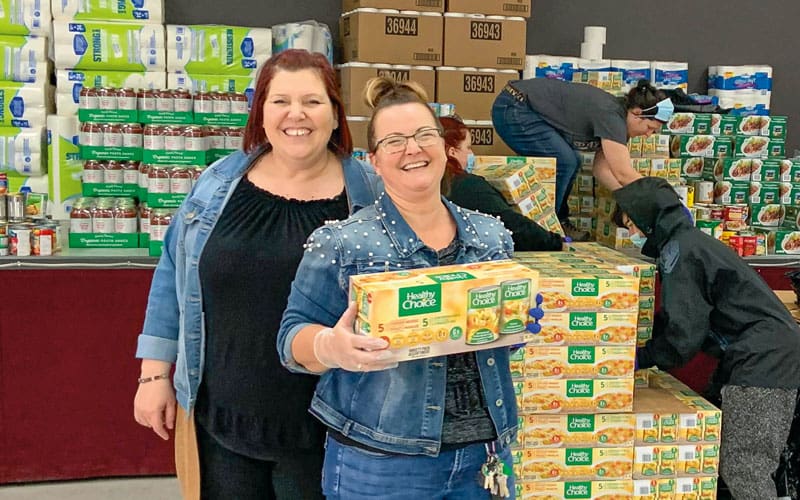
Volunteers from La Maison de la Famille de la Vallée de la Gatineau unload donated food.
COURTESY OF GREATER VANCOUVER FOOD BANK
Making it work
Donating not only benefits people in need and the environment, but also dramatically reduces expensive trash disposal fees. “These donations allow us to increase the rate of goods diverted from landfills, and we’re constantly working to improve our procedures,” says Luc Lortie, Costco’s sustainability and environmental director. “We save on hauling and disposal costs, but most importantly, this allows us to take care of our community.”
The process is integrated into the efficient daily operations in the warehouses. When stockers rotate produce in the coolers each morning, they handle each box and can spot brown lettuce or mouldy fruit. Similar checks happen as stock is refreshed throughout the day.
These foods are scanned for inventory tracking, stacked on pallets and, if necessary, stored in roll-in coolers to await pickup. The next step varies, depending on location. In some warehouses, donated food can be distributed to an agency’s clients the same day.
What makes food safe but unsellable? It could be that there’s one fuzzy strawberry in a 1-kilogram (2-pound) container. Perhaps a box of cereal has been mangled. Maybe a bag of bagels has reached its sell-by date. If it’s safe to eat, it’s fair game—even if it no longer meets Costco’s high standards for the products it sells. It all adds up. Last year, Costco donated 7,400 metric tonnes of food to local agencies.
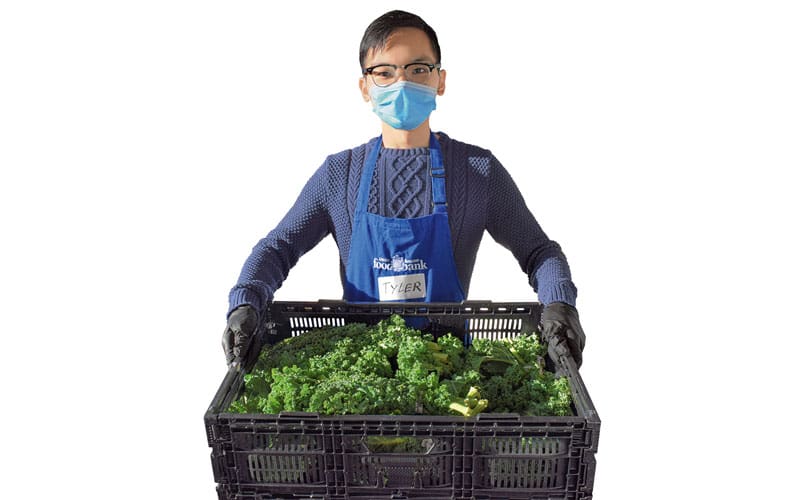
Food put to good use in Vancouver.
COURTESY OF GREATER VANCOUVER FOOD BANK
Meals with dignity
In Ontario’s Durham region, much of Costco’s food ends up directly in meals prepared for the community’s needy.
Durham Outlook for the Needy (DOFN) gathers food from Costco and other businesses and divides it up for its own programs and for other food banks, charities and schools. Its core program is St. Vincent Pallotti’s Kitchen, which offers nutritious hot meals 365 days a year in a dignified restaurant setting. Meal tickets are free to individuals and families experiencing poverty, or $1.50 if a resident can afford it.
“We pick up food in our refrigerated truck, take what we can use and share with the other organizations in need within the Durham community,” explains Valerie Moreton, DOFN’s director of operations and fundraising. “Our relationship with Costco speaks directly to our mission, which is to provide accessible food in a dignified manner to the needy in Durham. We pick up vegetables, fruits, bread, desserts. It helps us provide meals to roughly 150 to 250 people per day.”
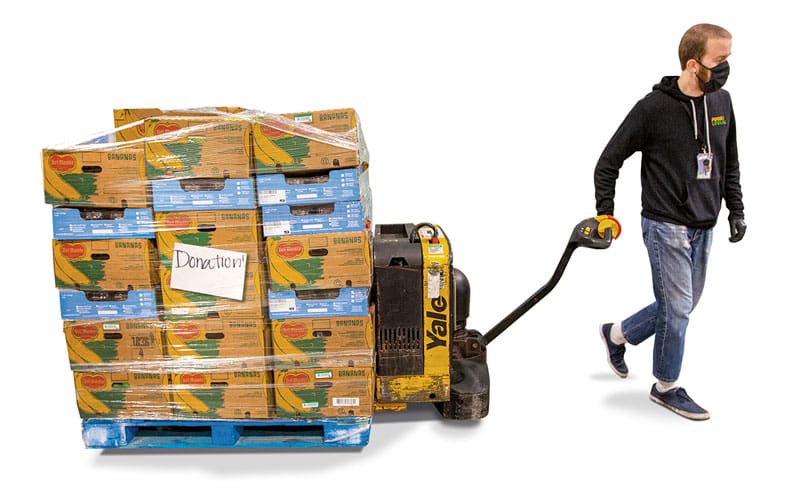
A food bank employee prepares a load.
COURTESY OF GREATER VANCOUVER FOOD BANK
Recycling electronics and other goods
A similar process takes place for non-food items in the warehouses. Costco and suppliers work together on the best low-cost options for member returns. Some items are sent back to the supplier; others can be designated for donation.
Costco has introduced a new donation policy that allows products such as unused or unopened soap, school supplies, pet food and paper products to be collected with food donations in cities that have large distribution donation centres. For example, if a pack of three items is returned to Costco, Costco recycles or disposes of the opened container through a program for environmentally sensitive items to ensure it is diverted from the local landfill, and donates the other two items to a family in need. The larger charitable organizations keep an updated list of what sister organizations require, and track the items to ensure they reach families in need.
For electronics that can’t be returned to the supplier, Costco works with a national electronics recycler, eCycle Solutions (ecyclesolutions.com). These products are shipped to eCycle, where they are recycled at one of five centres across Canada (they are not shipped overseas or outside Canada). Then eCycle breaks down the electronic waste to its base components and sells the raw materials to become new products. This program prevents valuable returned or recalled products from leaching toxic chemicals into landfills.
Electronic recycling has increased by 37% over the last three years, says Lortie.
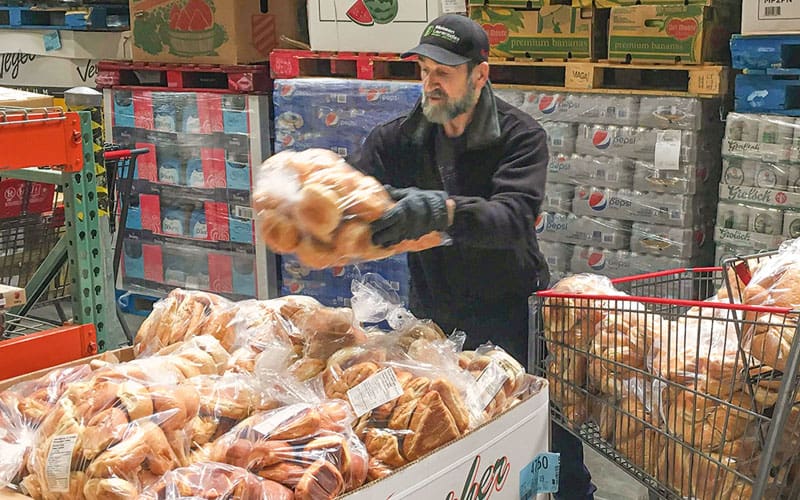
A volunteer from the food bank Moisson Laurentides picks up bread donations from a Montreal-area Costco.
COURTESY OF LUC LORTIE
Partnerships are key
The success of these programs comes from the commitment and professionalism of the charitable organizations that partner with Costco, Lortie notes. “And it is often the result of several employees who are very passionate about ensuring donations are maintained and increased and [who] ensure all departments contribute. Costco employees are often multi-year employees who take this to heart and want to give back to their community. As we provide top-quality food and non-food items, there is a strong bond between our warehouses and local organizations, all done at the local level.”
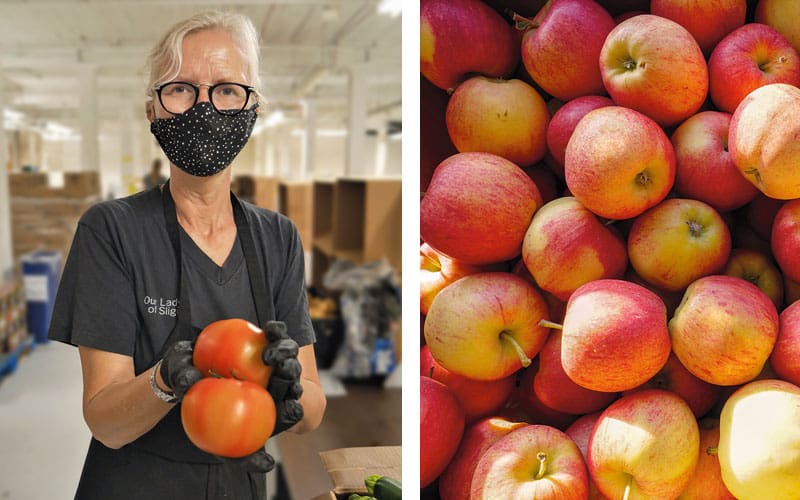
Fresh foods like apples and tomatoes are greatly appreciated by Costco’s food bank partners.
COURTESY OF GREATER VANCOUVER FOOD BANK
OTHER PROGRAMS
Depending on their location, Costco warehouses can divert inedible food for different uses. For example, nearly 5.4 million kilograms (12 million pounds) of food went to feed cattle and hogs last year. In Japan, a program sends coffee grounds to be repurposed as cattle feed.
Other foods are used for organic fertilizer, biofuels and electricity. For example, millions of kilograms of meat and bone scraps from meat departments in the warehouses are processed through rendering programs.
In some locations, inedible goods are placed in separate containers for organic recycling, to be transformed into compost. Some of it is top-quality organic compost used to grow organic feed for the production of organic milk and beer.
Details on many of these programs can be found in Costco’s Sustainability Commitment.—TT
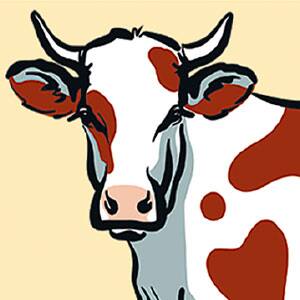
Reducing waste
One effective step in reducing food waste is to find creative uses for certain products. Many of Costco’s food items in the deli section come from other products sold in the warehouses. For example: Ground beef from the meat department is further harvested into stuffed bell peppers and shepherd’s pie.—TT

